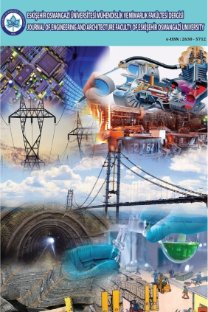Bor yayınımıyla yüzeyi sertleştirilmiş AISI 1030 ve AISI 1050 çeliklerinin abrazif aşınma dayanımlarının incelenmesi
The investigation on abrasive wear resistance of surface hardened AISI 1030 and AISI 1050 steels by boronizing
___
- [1] A.G.von Matuschka, “Boronizing”, Carl Hanser Verlag, München Wien, 1980.
- [2] H.J. Hunger and G. Trute, “Boronizing to Produce Wear-Resistant Surface Layers”,Heat Treatment of Metals, Vol.2, pp. 31-39, 1994.
- [3] A. Özsoy, “Çeliğin Borlanmasında Borür Tabakası, Geçiş Zonu ve Ana Matriksin Özelliklerinin İyileştirilmesi”, Anadolu Üniversitesi Fen Bilimleri Enstitüsü, Doktora Tezi, Eskişehir, 1991.
- [4] Anonim, “Bor Dosyası”, TMMOB Jeoloji Mühendisleri Odası Haber Bülteni, Cilt 1-2, ss. 6-25, 2001.
- [5] M. Karakan, A. Alsaran ve A. Çelik, “Plazma Borlama”, Mühendis ve Makine, Cilt 43, Sayı 512, ss. 51-54, 2002.
- [6] I.M. Hutchings, “Surface Engineering in Tribology, Chapter 8, In: Tribology: Friction and Wear of Engineering Materials”, Edward Arnold Pub., London, 1992.
- [7] W. Fichtl, N. Trausner and A.G.von Matuschka, “Boronizing with Ekabor”, Elektroschmelzwerk Kempten GmbH, 1987.
- [8] C. Meriç, S. Şahin and S.S. Yılmaz, “Investigation of the Effect on Boride Layer of Powder Particle Size Used in Boronizing with Solid Boron-Yielding Substances”, Materials Research Bulletin, Vol.35, pp. 2165-2172, 2000.
- [9] D.N. Tsipas and J. Rus, “Boronizing of Alloy Steels”, Journal of Materials Science Letters, Vol.6, pp. 118-120, 1987.
- [10] J. Subrahmanyam and K. Gopinath, “Wear Studies on Boronized Mild Steel”, Wear, Vol.95, pp. 287-292, 1984.
- [11] T.S. Eyre, “Effect of Boronising on Friction and Wear of Ferrous Metals”, Wear, Vol.34, pp. 383-397, 1975.
- [12] J. Rus, C. Luis De Leal and D.N. Tsipas, “Boronizing of 304 Steel”, Journal of Materials Science Letters, Vol.4, pp. 558-560, 1985.
- [13] S.L. Evtifeev and A.S. Sin’kovskii, “Method of Improving the Heat Resistance of Parts Working Under Conditions of Discontinuous Lubrication”, Metal Science and Heat Treatment (USSR), Vol.27, No.7-8, pp. 627-629, 1985.
- [14] F. Nair, M.B. Karamış ve A. Taşdemirci, “Endüstriyel Uygulamalarda Borlanmış Çeliklerin Aşınma Davranışının İncelenmesi”, 8. Denizli Malzeme Sempozyumu, 26-28 Nisan 2000, Denizli, Bildiri Kitabı, ss. 334-343.
- [15] E.V. Shadrichev and S.I. Rumyantsev, “Wear Kinetics of a Two-Phase Boride Layer”, Metal Science and Heat Treatment (USSR), Vol.24, No.7-8, pp. 495-498, 1982.
- ISSN: 1301-045X
- Yayın Aralığı: Yılda 3 Sayı
- Başlangıç: 2018
Baraj hazne işletme çalışmalarında yeni kriterler
İçi sıvı dolu tek katmanlı kompozit tüpte kolajen liflerin etkisi
Gümeli (İvrindi-Balıkesir) talk oluşumlarının mineralojik, jeokimyasal özellikleri
Kireç ile stabilize edilmiş bir zeminin hidrolik geçirgenliğinin arazi boyutlarında belirlenmesi
Performance analysis of sodium sulfur battery in energy storage and power quality applications
